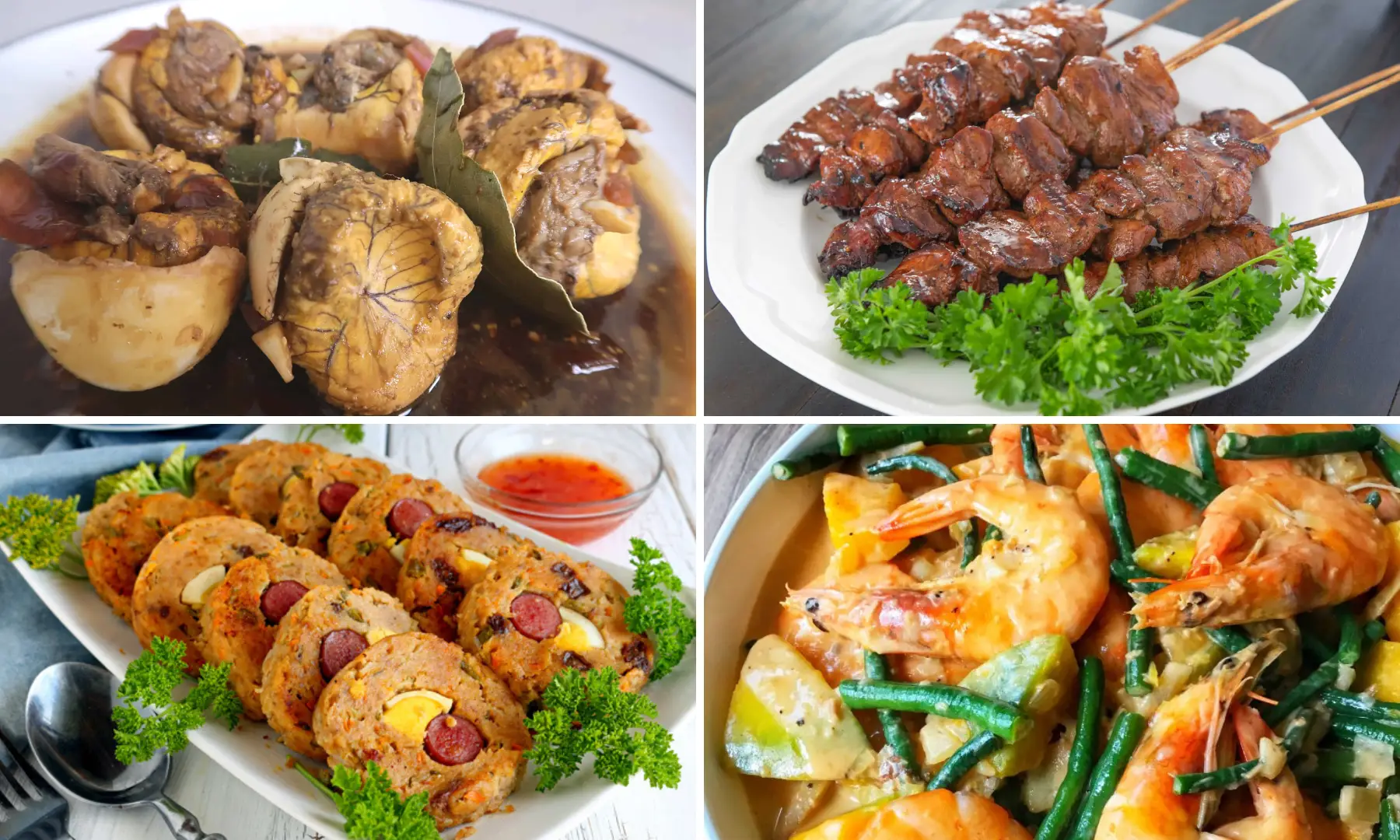Relish Traditional Filipino Flavors With Easy-To-Follow Recipes
Discovering traditional Filipino food provides a special opportunity to involve with an abundant tapestry of flavors and cultural stories. As we check out these cooking practices, one may question how to ideal bring the heat of Filipino friendliness to their very own eating table.

Review of Filipino Cuisine
Checking out the dynamic tapestry of Filipino cuisine exposes a rich cultural heritage affected by different historic and geographical elements. The Philippines, an archipelago of over 7,000 islands, boasts a varied array of tastes and cooking techniques. The country's culinary landscape is formed by indigenous practices and the impacts of colonization, trade, and movement. Therefore, Filipino food is a special mix of Malay, Spanish, Chinese, and American components.
Rice works as the keystone of Filipino meals, usually gone along with by a variety of veggies, meats, and fish and shellfish. Making use of strong tastes is a hallmark of the cuisine, with active ingredients such as garlic, onions, ginger, and soy sauce playing essential roles. The emphasis on common dining reflects the Filipino society of friendliness and family members connections.
Street food also plays a significant role in the culinary scene, showcasing regional active ingredients and imaginative food preparation techniques. As the Philippines continues to embrace globalization, the fusion of standard and modern-day impacts can be seen in modern Filipino recipes, additionally enriching its cooking identification. Filipino food recipes. In general, Filipino food is a testament to the nation's background, culture, and lively spirit
Must-Try Conventional Meals
Filipino cuisine is ideal experienced with its conventional recipes, each using a special understanding right into the nation's varied cooking heritage. Amongst the must-try recipes is Adobo, a savory stew typically made with chicken or pork, marinaded in vinegar, soy sauce, and garlic before being slow-cooked to perfection. Its rich and tangy flavor account represents the heart of Filipino comfort food.
Another famous dish is Sinigang, a sour soup commonly prepared with tamarind, tomatoes, and different veggies. This recipe can include pork, shrimp, or fish, and is treasured for its rejuvenating taste and warming up high qualities.
Lechon, an entire baked pig, is a centerpiece at Filipino parties, known for its crunchy skin and tender meat. It symbolizes the cheery spirit of Filipino events.
For those food craving something wonderful, Halo-Halo is a delightful treat incorporating smashed ice, sweetened fruits, jellies, and covered with leche flan and purple yam.
Each of these traditional dishes encapsulates the significance of Filipino culture, welcoming anyone to relish the dynamic flavors and sites rich background that define the island chain's culinary landscape.
Step-by-Step Recipes
Cooking genuine Filipino meals in your home can be an enhancing experience that brings the vibrant flavors of the Philippines right into your kitchen. With a variety of standard recipes to choose from, using detailed recipes permits both amateur and skilled cooks to master the techniques and tastes essential to Filipino food.
Begin by picking a meal that intrigues you, such as adobo, sinigang, or lumpia. Each recipe frequently includes an in-depth component list adhered to by clear guidelines, leading you via the food preparation process. Begin with preparation, which might entail marinating proteins, chopping vegetables, or measuring seasonings. This foundational step ensures a smooth food preparation experience.
As you advance, pay very close attention to cooking methods one-of-a-kind to Filipino cuisine, such as sautéing (ginisa) or stewing (nilaga) These techniques can substantially boost the depth of taste in your dishes. Timing is critical; adhere to the suggested food preparation times to achieve the perfect structure and preference.
Vital Active Ingredients and Tips
Often, the trick to mastering Filipino cuisine lies in understanding and using vital components that define its distinctive flavors. Central to lots of recipes are staples like soy sauce, vinegar, garlic, and ginger, which add to the one-of-a-kind equilibrium of full-flavored, sour, and wonderful notes. Soy sauce functions as a base for webpage marinades and sauces, while vinegar, especially walking stick vinegar or coconut vinegar, gives a zesty illumination that is critical in meals like adobo.
Rice is a vital element of Filipino meals, typically served along with main dishes to absorb tasty sauces. For a touch of authenticity, select jasmine or long-grain rice. In addition, utilizing fresh fruit and vegetables such as tomatoes, eco-friendly beans, and eggplants improves the recipe's vibrancy and dietary value.
Do not overlook the value of natural herbs and flavors, such as bay leaves, lemongrass, and chili peppers, which raise the flavor profile. When food preparation, bear in mind that perseverance is essential-- enabling components to meld together leads to richer flavors. Accept the technique of tasting as you go; this will certainly allow you to readjust seasonings and attain the excellent balance that characterizes Filipino food.
Serving and Enjoying Filipino Dishes
Understanding the nuances of Filipino food prolongs beyond prep work and ingredients; it includes the method dishes are offered and delighted in. The Filipino click this site dining experience is characterized by common sharing, advertising a feeling of togetherness and party. Normally, meals are presented in huge portions, permitting restaurants to take part in a selection of tastes.
Rice, a staple in Filipino meals, is typically functioned as the structure whereupon the other dishes remainder. Coming with viands, such as adobo, sinigang, or lechon, are positioned in the center of the table, welcoming guests to serve themselves. Filipino food recipes. This practice not just cultivates a loosened up environment however likewise urges discussions and links among diners

Verdict
In conclusion, conventional Filipino food supplies an abundant tapestry of tastes and cultural importance, inviting exploration through its varied meals. Involving with this dynamic cuisine not only improves the eating experience but also protects and commemorates the heritage of the Filipino people.